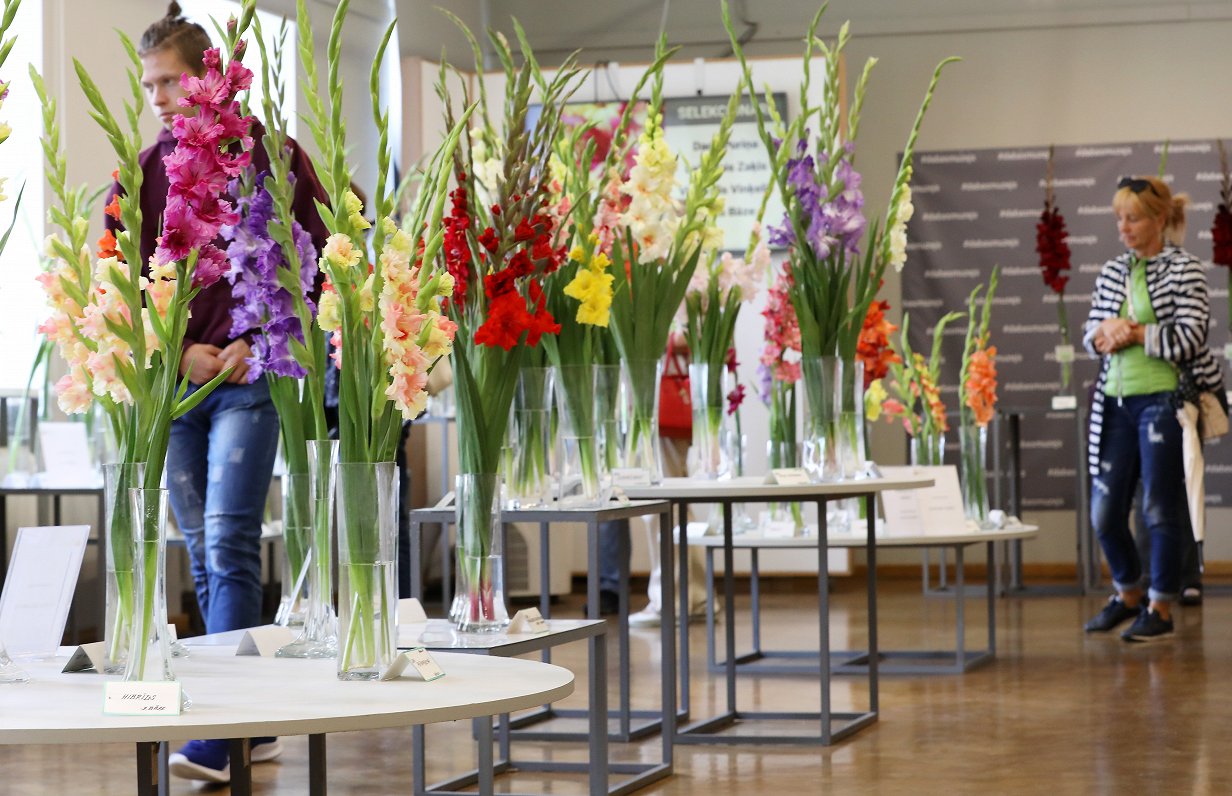Gladioli are a thing in Latvia. Plant breeder Laimonis Zaķis, who heads the Latvian Association for Gladioli and Irises, explains how these flowers came to be so popular here and what has been achieved so far in the subtle art of breeding gladioli.
Native to South Africa and the Mediterranean, these plants were first cultivated in Europe in the 17th century, with more than 2,000 breeds created over the next two hundred years.
Growing gladioli first became a popular pastime in the interbellum, with a number of companies offering globally sought-after gladioli, such as Palmer's Picardy, in the 1930s. These sword-like flowers were particularly in vogue in the 1950s, with Viktors Orehovs singling himself out as one of the top breeders. He also spread some of the craze to Russia, shipping the results of his labor of love across the Soviet Union.
In the early 1960s, Aldonis Vēriņš brought American varieties into Latvia. This was a huge boon for breeders and the culture at large as, compared to the old Dutch varieties, the American ones were sturdier and with a better flower arrangement. This, too, contributed to the growing popularity of these plants, to the extent that in the late 1970s and early 1980s one often had to wait in line for an hour to get into an exhibition of gladioli. It was also a business looked down upon by the Soviet authorities.
While early breeders had trouble creating cerulean and green gladioli, now all colors are available except black (these still have a different shade below).
There are so many varieties breeders are hard-pressed to come up with something radically new. Instead, most work to perfect the plant, e.g., for stability, flower arrangement and resistance to the elements.
When creating a new variety, breeders pick the best specimen with at least twenty buds and eight simultaneously blooming flowers without any having started wilting. Laimonis Zaķis has seen exemplars with twenty buds apiece and created plants that had had a whopping sixteen flowers in boom at the same time. Alas, these most sumptuous gladioli wilt faster due to lack of proportion.
A series of plant wonders
Latvians like to think they are more in tune with the seasons than most. With that in mind, we'll be guiding you through the next few months with this series on the plants you can encounter from autumn onwards.
Laimonis Zaķis says that one should buy gladioli with three to four flowers about to burst to see them in bloom for the longest possible time.
Visvaldis Viņķelis is the oldest gladioli breeder still going at it in Latvia. He has been doing this for more than 40 years and has authored more than 300 varieties. The best of his flowers are popular abroad as well. Black Night is a particularly interesting variety of his, with cherry-colored flowers that increase in intensity on the sides.
Laimonis Zaķis meanwhile has created more than 200 varieties but is convinced that his best flowers are still ahead of him. Among the best-known of his gladioli are the Brīnumdare (Miracle Worker) and Zīda tīkli (Webs of Silk). The first bloom in green and acquire a red color afterwards, while the latter are raspberry pink shot through with a white webbing.





























